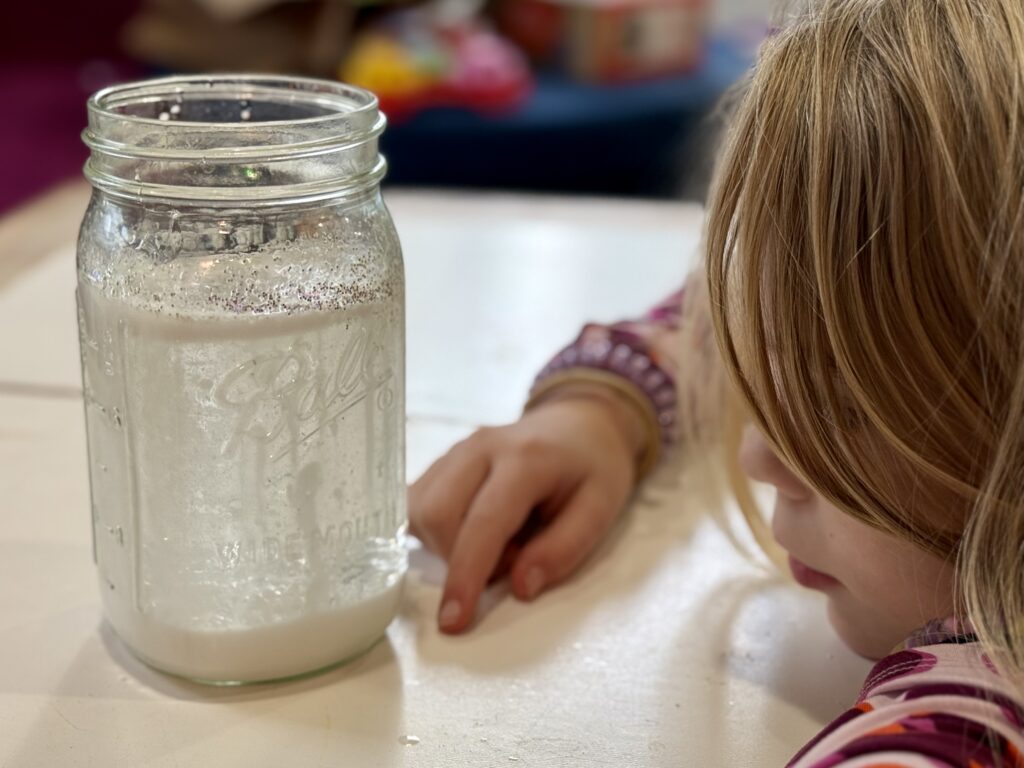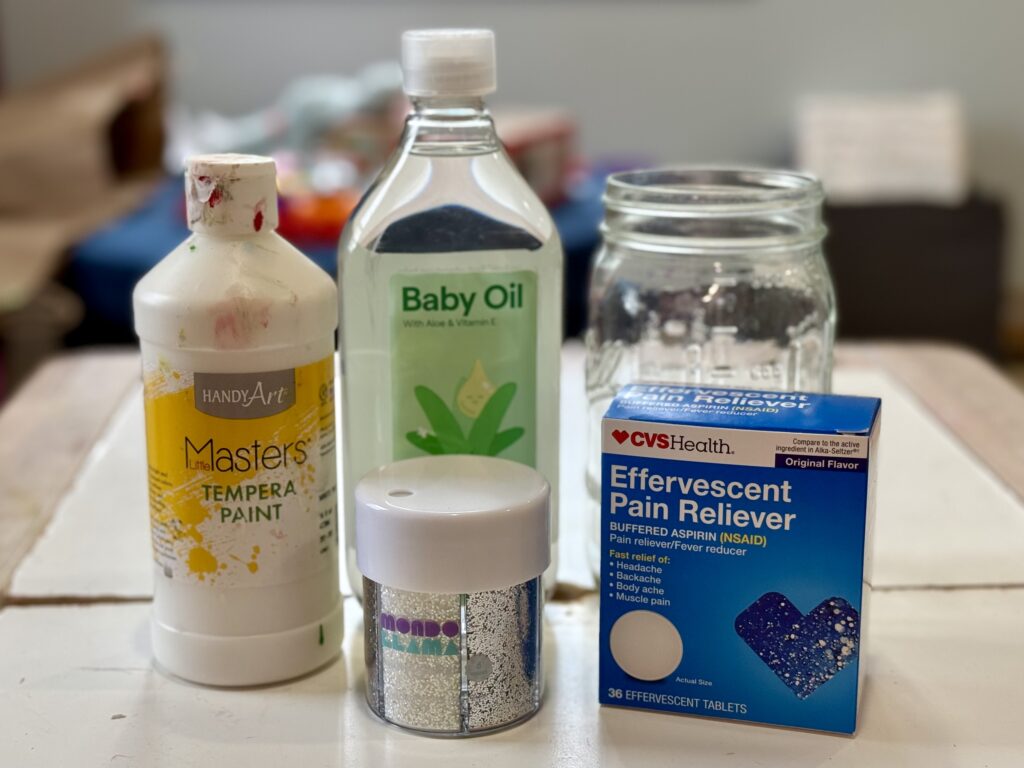We woke up to snow this morning, which is always exciting! Since we are still on our extended winter break, we decided to do some science before heading out into the snow to play. Check out how we make a snowstorm in a jar!

Snowstorm in a Jar
This activity really does not require all too many ingredients. I will say though, I did not have all of them on hand myself.

Supplies
- Baby oil
- Water
- White paint
- Alka Seltzer
- Glitter
- Mason jar
How to Make a Snowstorm in a Jar
This activity does not require much set up but lots of play and watching. Start by filling a mason jar with baby oil. We filled our jar about 2/3 to 3/4 full. This is not an exact science, just allow some room for it to be filled with about 1/4 of water and space for it to bubble.
Next we measured out about 1/4 to 1/3 cup of water and squirted in some white paint. We mixed this well and added it to the mason jar. Since oil and water do not mix, the painted water sinks to the bottom. We also added some glitter just for a bit of shine.
Lastly, add in your Alka Seltzer. Now watch the magic unfold!
The Science Behind the Snowstorm
Water Based Paint
Choosing a paint in this situation is important. Acrylic paints and most washable paints are water based. This allows for the water to mix with the color and create the “snow” at the bottom of the jar. There are also oil based paints out there, these would mix with the oil. In this situation, you could choose a blue oil based paint and create a nice blue sky for the snow to fall through.
Food coloring is also water based and would be an alternative to create a colorful snow storm!
Water is More Dense than Oil
This is a chance to learn a little about density as well ability to mix. Water and oil are immersible, meaning they cannot be mixed. Water is also more dense than oil. So when mixing items, the more dense or “heavier” a liquid, the more it will sink. So in this situation, we dyed the water white to look like snow and it sinks to the bottom of the jar.
Alka Seltzer Chemicals
Alka Seltzer has sodium bicarbonate (also known as baking soda) and citric acid in it. When these chemicals are mixed with water, they create carbon dioxide. Carbon dioxide releases as bubbles which floats to the top of the oil. When the carbon dioxide is released, it takes some of the water and paint mixture with it. Due to the fact that water and oil do not mix, this allows us to visibly see the carbon dioxide released as it is seen in the form of white bubbles. When the carbon dioxide reaches the top, it is released into the air. Once the carbon dioxide is released, the water and paint mixture slowly falls back through the oil. This chemical reaction is what creates the illusion of a snowstorm in our jar!
If you enjoy science experiments, come check out a photosensitivity reaction we did this fall!

[…] fun winter activities we have done: snowstorm in a jar, instant snow, and scented […]